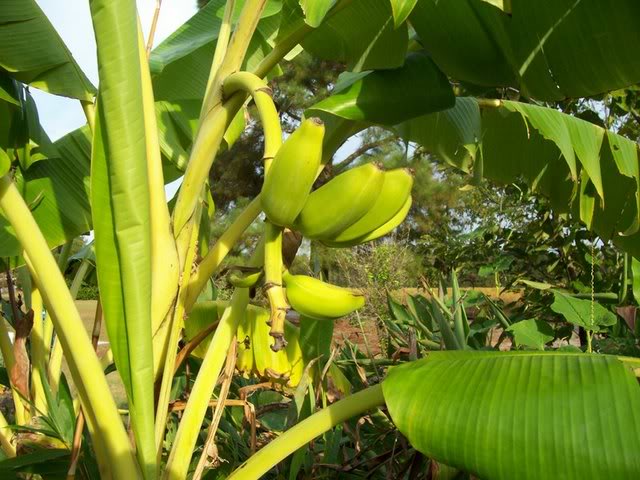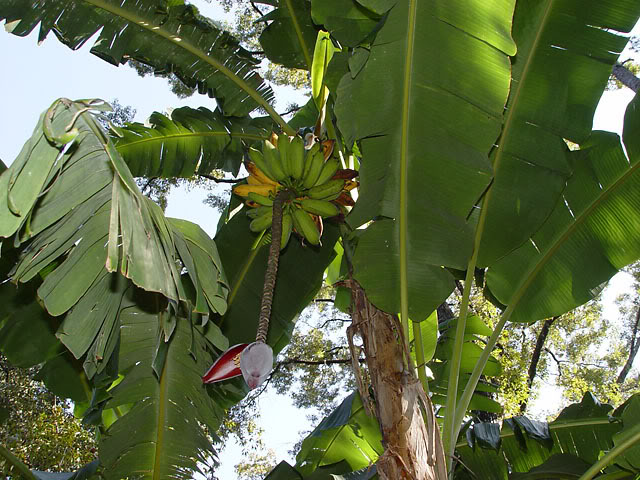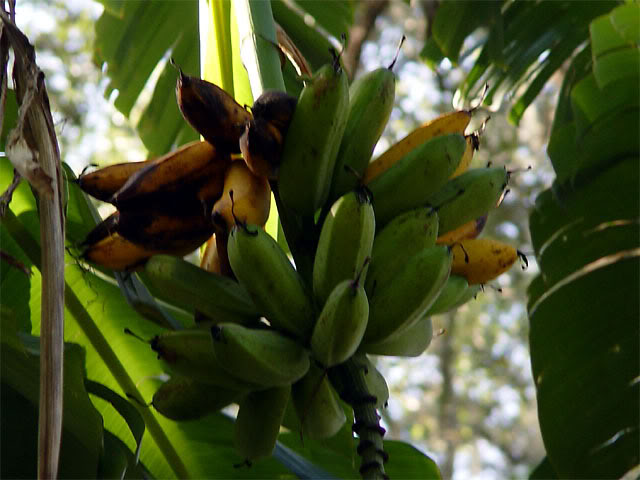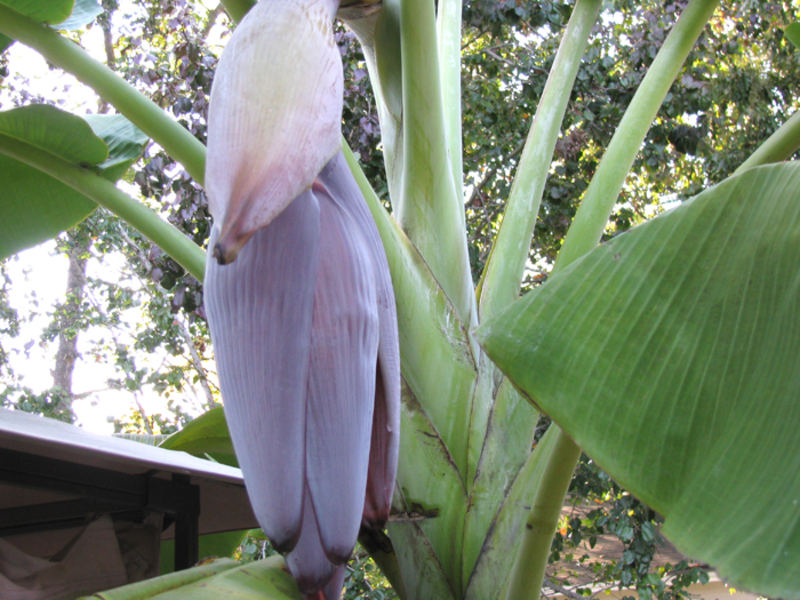Here it is, and the content:
link
I thought the overwintering of fruits can't be done. But Benny and I have witnessed how the California Gold survived the Arctic Blast this year and went on to develop plump fruits for Benny. The California Gold bloomed in November. It was dugged out from Antioch in December and planted at Benny's yard. Then was covered in canvas the whole winter to protect against the upcoming Arctic Blast. Benny was discouraged and wanted to cut it down after the blast, but I protested and followed my advice on what to do. Now we have a true-to-life banana bloom that has survived near 20 deg F prolonged freezing nights, and the fruit is now ready, unless Benny wants it ripened on the plant. Based on those experiences, here is a modified procedure that I am going to do this coming winter. I too have a late fruiting Dwarf Brazilian, and below would be exciting to try out:
At the end of summer, stop removing any dead leaves or dead sheaths from your bananas. Any dried material would help as insulation or frost cover.
Now follow the minimum temperature forecasts religiously when it starts to dip below 40 deg F. Watch out for the first forecasted frost of the season. Frost can form when minimum temperature is 38 deg F, on clear, windless nights. But when there is cloud cover during the night, frost seldom form even at 30 deg F. Anyway, at least 2 nights before the forecasted frost, prepare your fruiting banana stalk as follows:
Take the three to four nearest leaves and bend them to wrap the bloom or young fruit bunch and tie securely with twine or garden tie. Then wrap Christmas tree lights around the trunk, and up to the leaves that you wrap around the fruiting bunch. As many Christmas lights you can wrap. Then wrap drape over the bundled leaves and the trunk a floating row cover, secure with garden tie. Then drape over the whole banana plant a plastic sheet and secure it so that it will not get blown away by the wind. Turn on the Christmas lights between midnight to 1 hour past sunrise using an outdoor type timer (from Home Depot), or whenever there is freezing temperature. If there is extended frost forecast, you will have to drape the banana with a canvas and secure it around the whole clump.
Cover the base of the banana with dried leaves, and then drape over plastic sheets over them to drain away the rainwater. You have to keep the banana roots dry so that they will remain dormant during the winter.
Come spring time, when minimum temperature consistently stay above 40 deg F and maximum temperature stays above 65 deg F, untie everything, remove the covers. You would have saved some leaves and they should stayed green if the minimum temperature during the entire ordeal did not go below 26 deg F. Later, when maximum temperature consistently reach over 70 deg F, remove all the dead parts from the stems, take out the dead leaves to encourage whole plant photosynthesis. Even if you lost all your leaves, the fruiting bunch or the bloom should have stayed alive. Even without a single leaf, by removing all the dead outer sheaths from the pseudostem, there will be enough photosynthesis so that your fruits will develop and will become plump, even if slowly. And by Fall, they should be ready for harvest and then you can ripen them inside the house if they haven't ripened on the plant.































